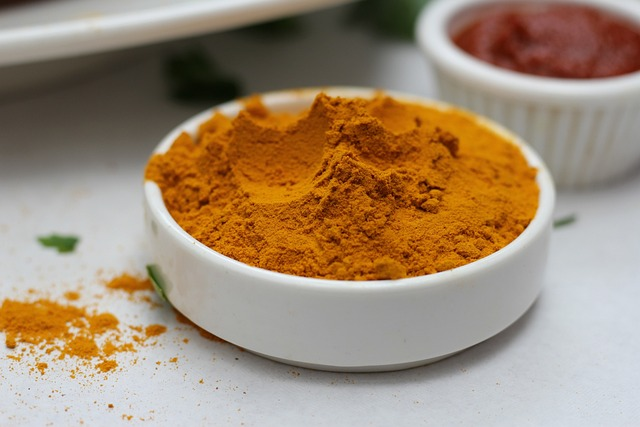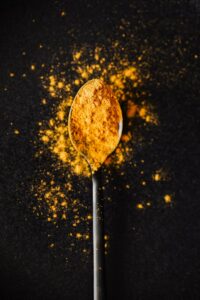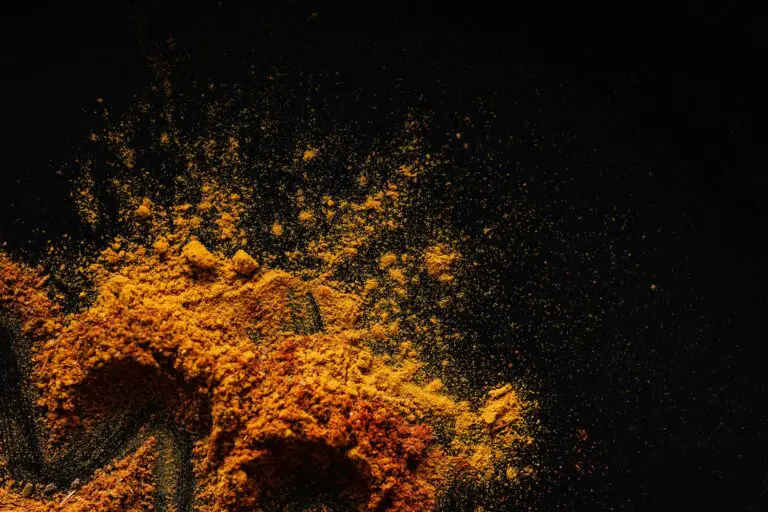From its vibrant yellow natural coloring to its potent medicinal properties, turmeric has held a significant place in the symbolism and folklore of various cultures around the world. The symbolism and folklore of turmeric in different cultures offer a rich tapestry of traditions, beliefs, and practices that span centuries. This golden spice, also known as the “Indian saffron,” has been utilized not only as a cooking spice but also as a medicinal herb and a symbol of cultural significance. Let’s delve into the diverse ways in which turmeric has been revered and integrated into the traditions of various cultures.

Turmeric’s Ancient Roots and Ayurvedic Influence
In Indian culture, turmeric has deep historical and cultural roots. The Hindu religion sees turmeric as auspicious and often uses it in various rituals and ceremonies. Its use as a medicinal herb dates back to ancient India, where Ayurvedic medicine recognized its potential to treat diseases due to its medicinal value. Traditional medicine systems like Ayurveda and Unani medicine have valued turmeric’s anti-inflammatory properties and have incorporated it into various treatments.
Turmeric’s Role in Asian Traditions
Chinese medicine also acknowledges the significance of turmeric. Its use as an anti-inflammatory agent and its potential to enhance blood circulation have made it a part of traditional Chinese medicinal practices. Similarly, in East Africa, turmeric has been utilized to treat various ailments ranging from chickenpox to insect bites. In West Africa, turmeric has been appreciated for its antibacterial properties and has found a place in traditional healing practices.
Turmeric in Indian Subcontinent and Southeast Asia
Turmeric’s influence is perhaps most pronounced in the Indian subcontinent. Ancient Tamil literature speaks of its use as an antibacterial agent and its ability to heal wounds. In Southeast Asian cultures, turmeric is often used in cooking and religious ceremonies. The spice’s vibrant yellow hue holds a symbolic significance in many societies, including the use of turmeric paste to dye clothing and evoke spiritual meanings.

Turmeric’s Divine Connections and Cultural Significance
In Hinduism, turmeric is associated with various deities and is used as a sacred offering. Hindu deities are often adorned with saffron-hued robes, and the use of turmeric paste in religious rituals is seen as an act of devotion. Turmeric increases not only the aesthetic appeal but also carries spiritual significance. The color yellow, reminiscent of turmeric’s golden hue, symbolizes purity, prosperity, and auspiciousness in Hindu traditions.
Turmeric in Modern Contexts
As time progressed, turmeric’s significance transcended traditional practices and found its way into modern medicine and cosmetic industries. Modern medicine has recognized turmeric’s potential due to its natural antioxidants and anti-inflammatory properties. The active compound, curcumin, present in turmeric, has been the subject of numerous scientific studies for its potential health benefits.
Ayurvedic Practices and Beyond
Turmeric’s prominence in Ayurvedic practices remains strong. Ayurvedic literature details its use for healing wounds, treating abdominal pain, and even countering the effects of poisoned food. The spice’s versatility has led to its incorporation into a range of preparations, from turmeric powder and turmeric essential oil to turmeric extracts used in dietary supplements.
Turmeric’s Journey through Time
The use of turmeric dates back to ancient times, where it was not only cherished for its flavor but also revered for its diverse applications. Pregnant women in certain cultures consumed turmeric-infused milk to alleviate menstrual difficulties and promote overall well-being. In the past, it was even used to dye clothing, further emphasizing its value as both a practical and symbolic element.

Culinary and Medicinal Fusion
Turmeric’s influence extends beyond its symbolism. It has become a key ingredient in many cuisines, particularly as a component of commercial curry powders. The combination of turmeric with black pepper enhances its bioavailability and effectiveness. This pairing is not only culinary but also stems from traditional practices that recognized the synergistic benefits of these two spices.
Turmeric’s Cultural Impact
Turmeric’s cultural impact remains undeniable, especially in Dravidian cultures of southern India. Its use in dishes such as “turmeric milk” and its incorporation into daily routines reflect its integral role in maintaining health and well-being. Whether it’s for its vibrant yellow color, its culinary essence, or its role in promoting good health, turmeric has left an indelible mark on numerous cultural practices.
Symbolism and Folklore of Turmeric in Different Cultures – Final Thoughts
In conclusion, the symbolism and folklore of turmeric in different cultures are a testament to its enduring importance. From its ancient origins in Indian and Asian traditions to its integration into modern medicine and cosmetics, turmeric’s significance is far-reaching. It’s vibrant yellow natural coloring, coupled with its potential health benefits, has made it a treasured spice and symbol across various cultures. As societies continue to embrace its value, turmeric remains a golden thread weaving together tradition, spirituality, and well-being.

